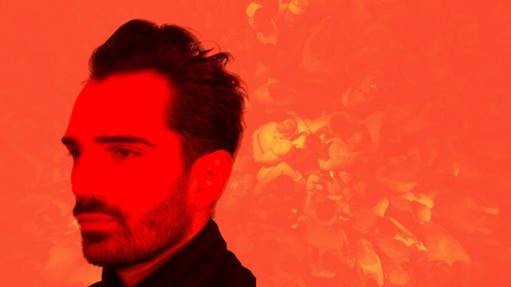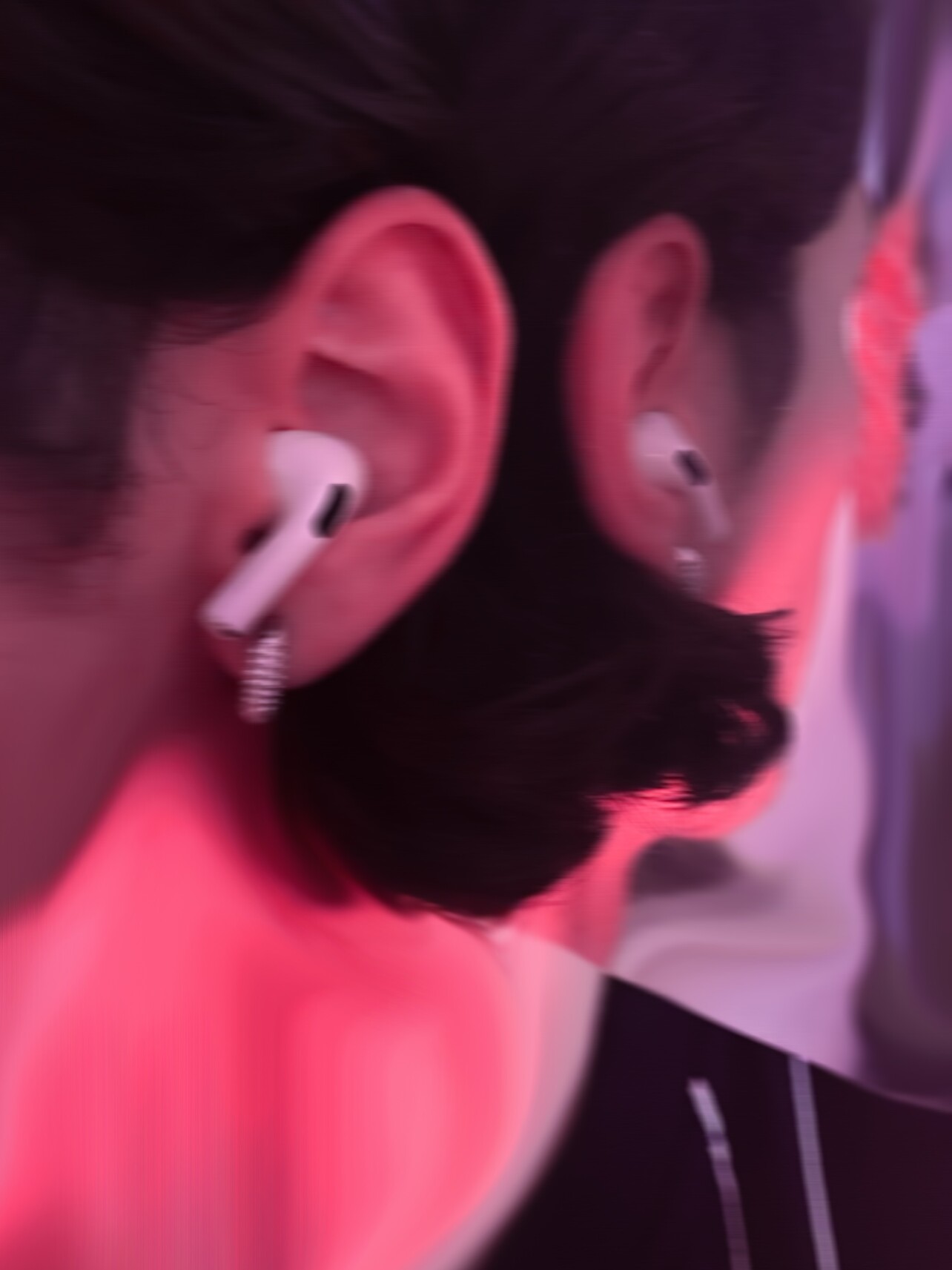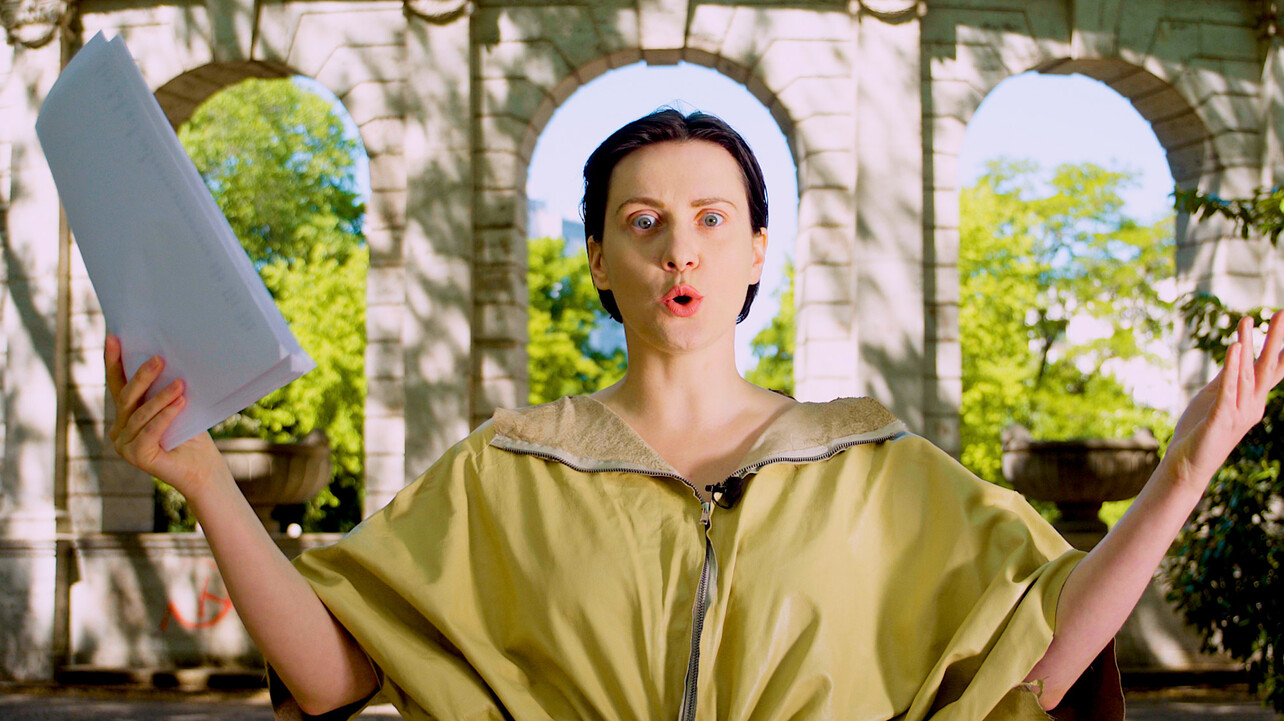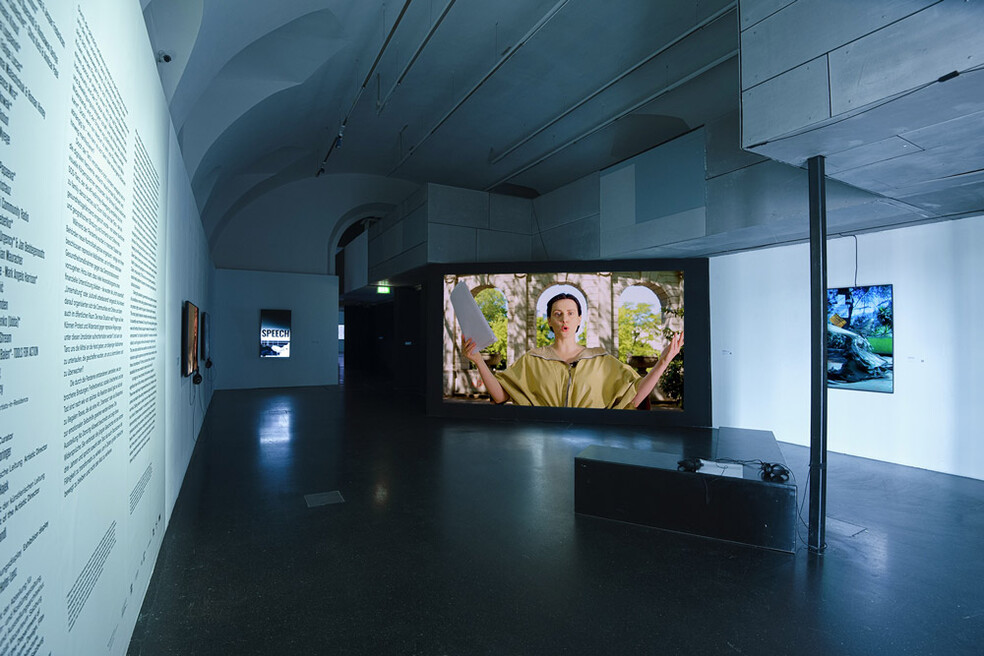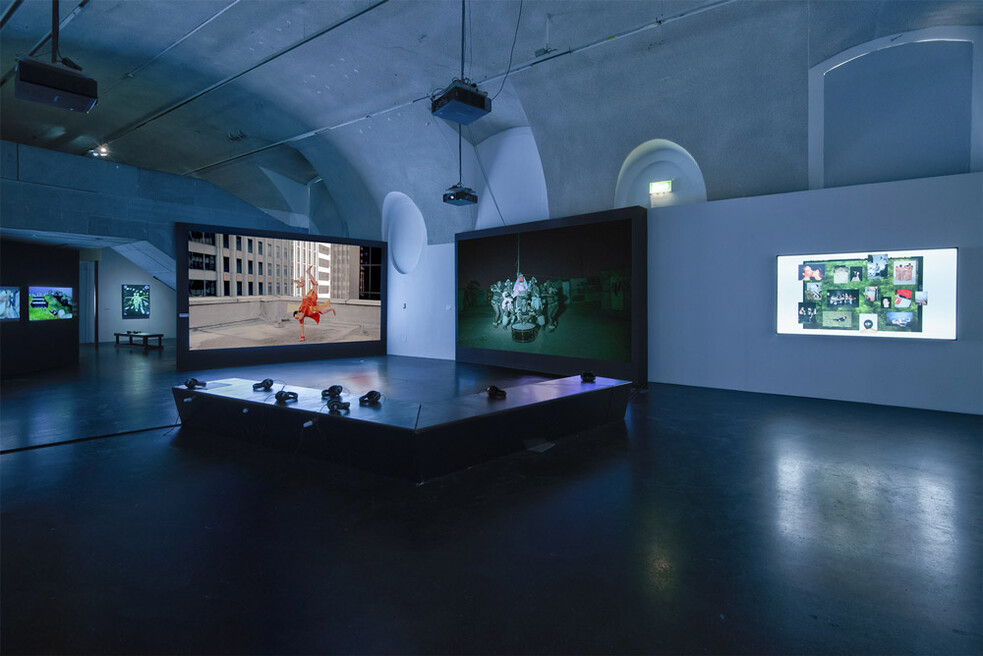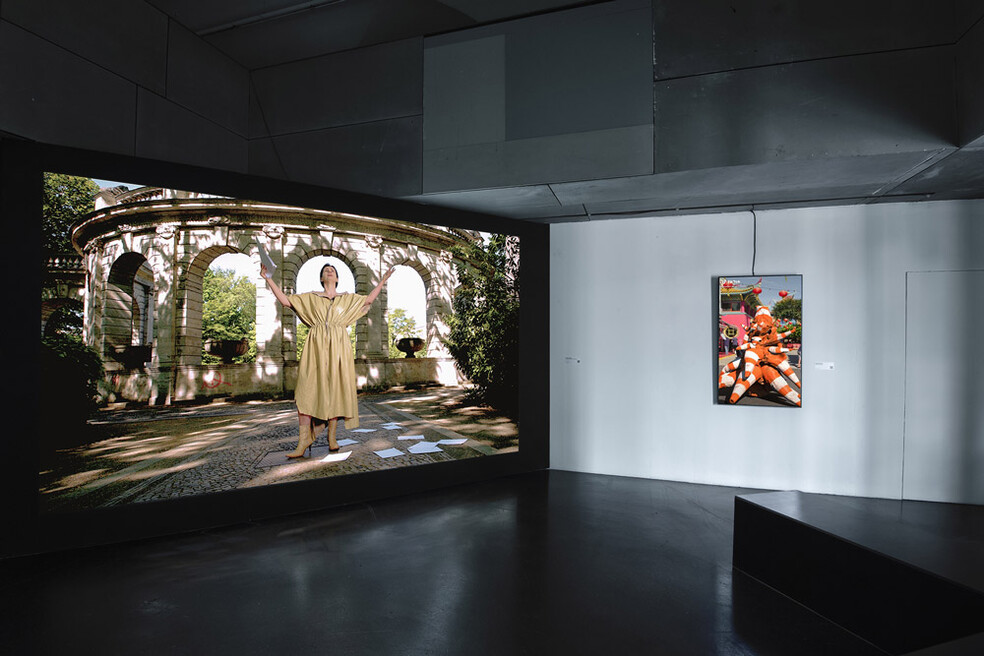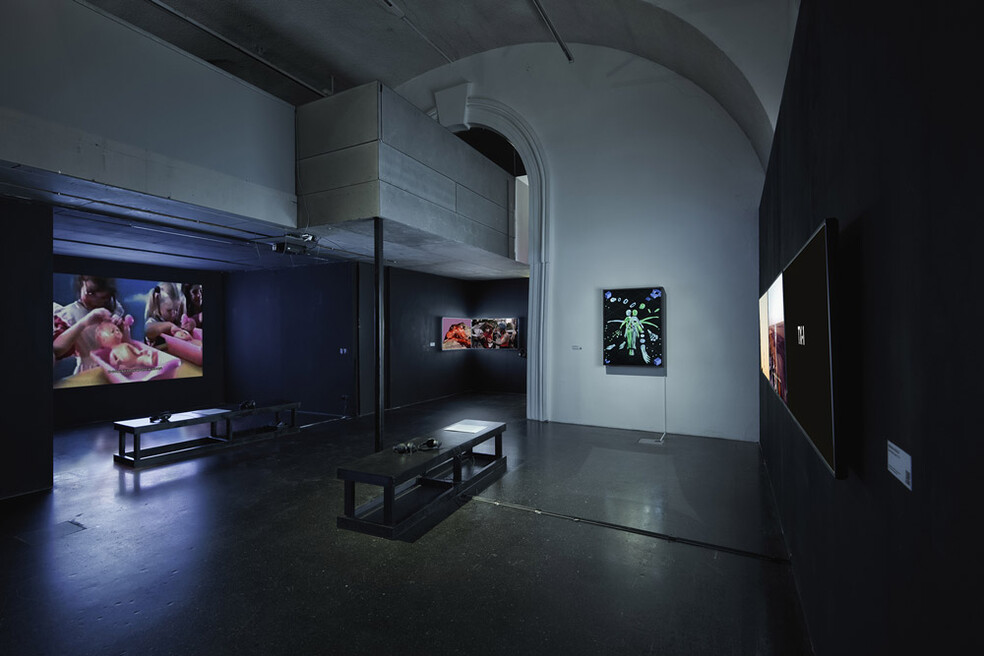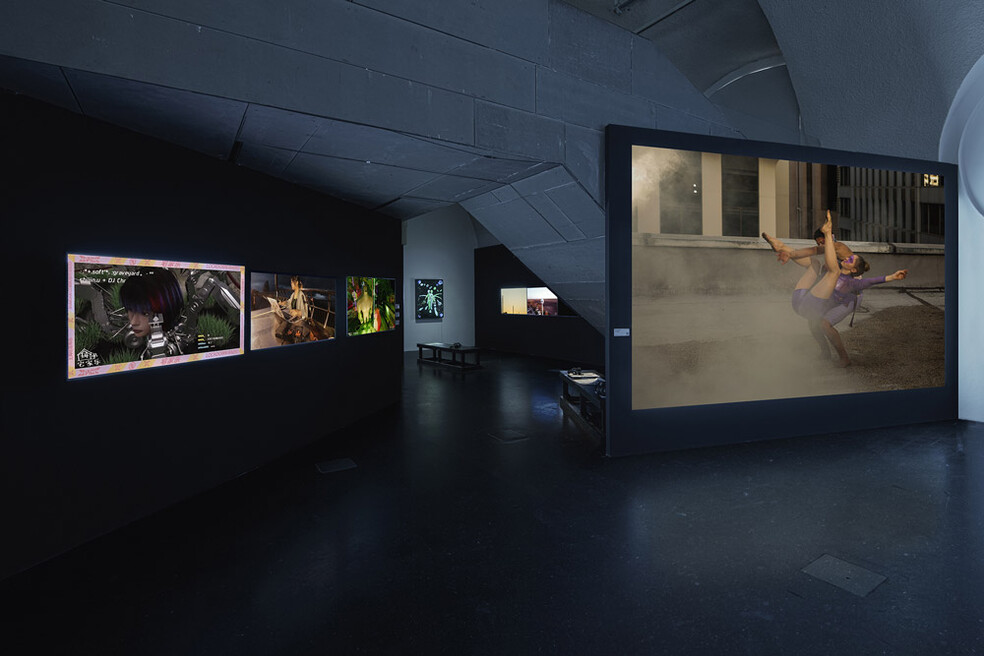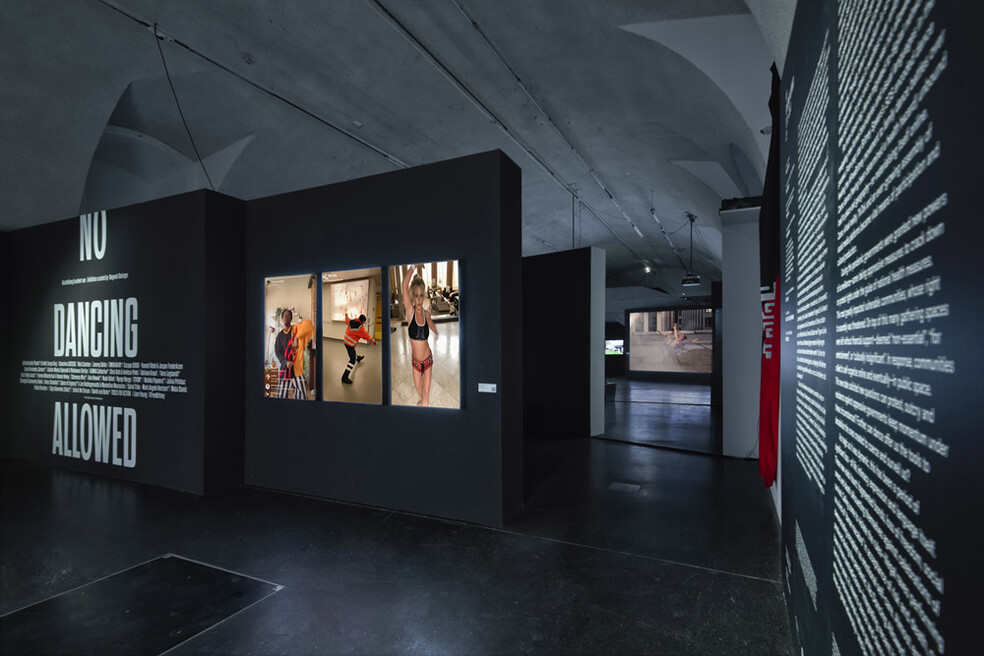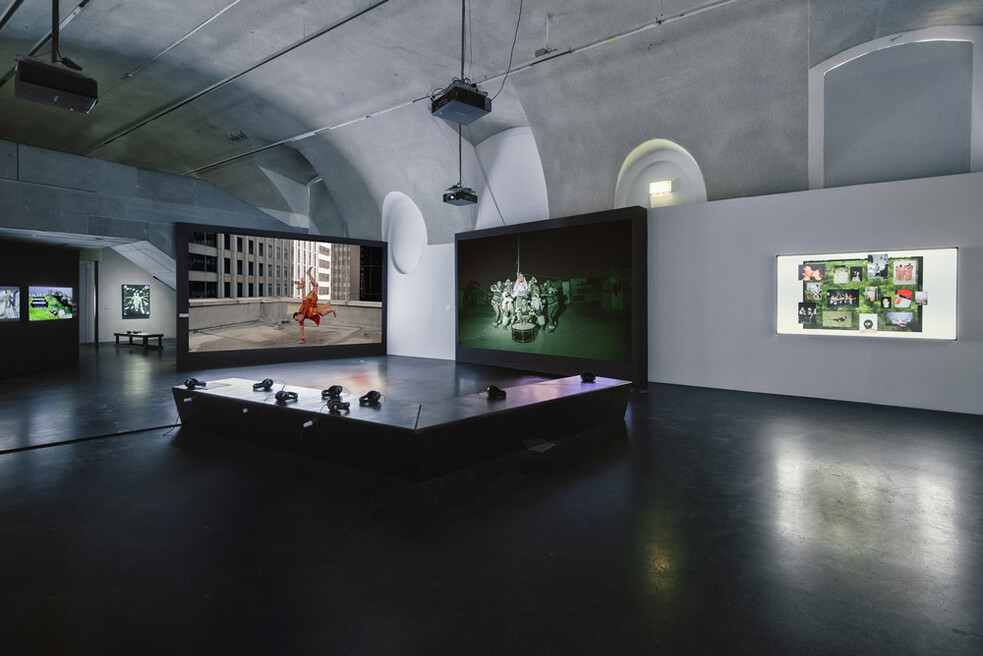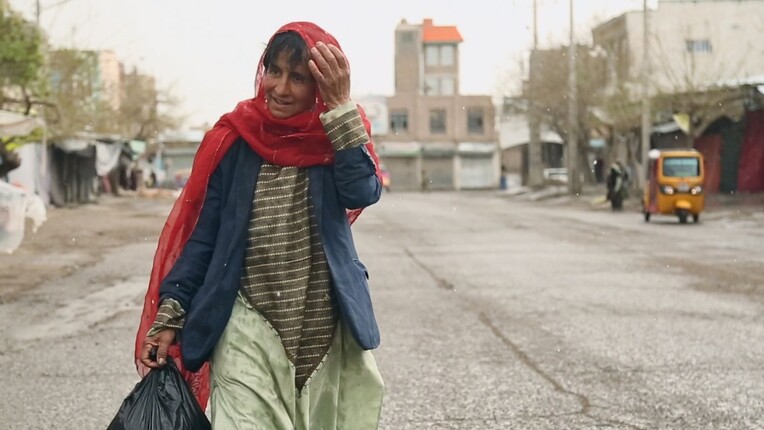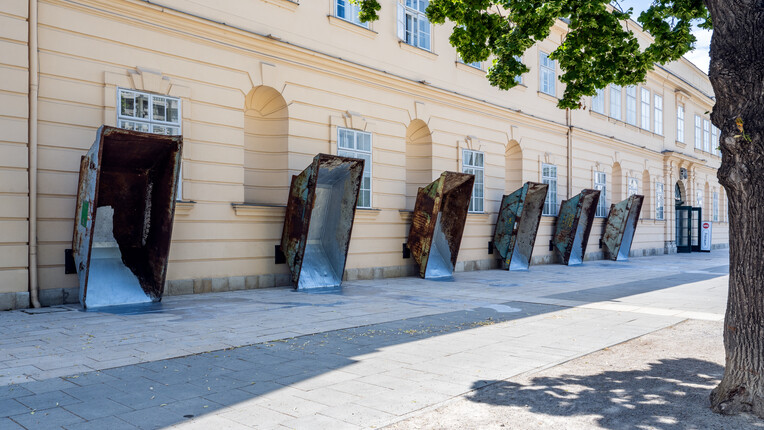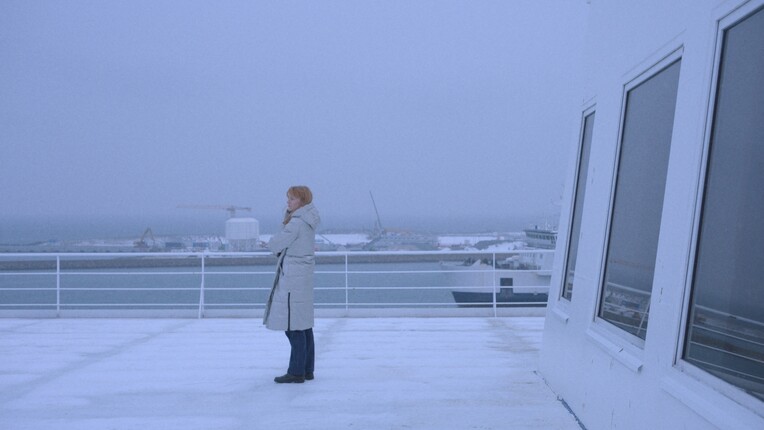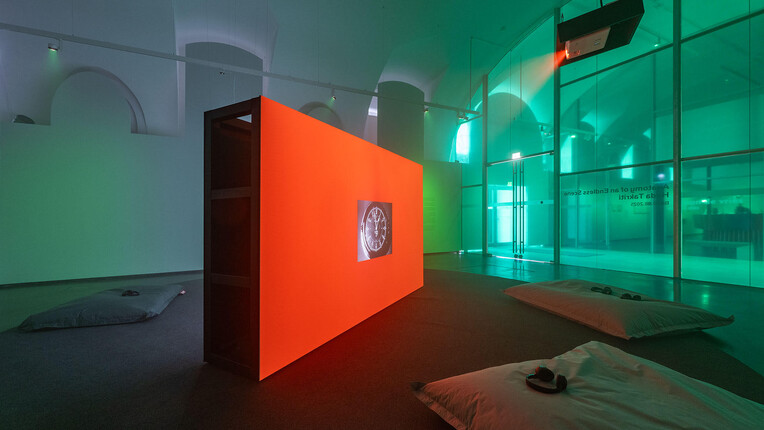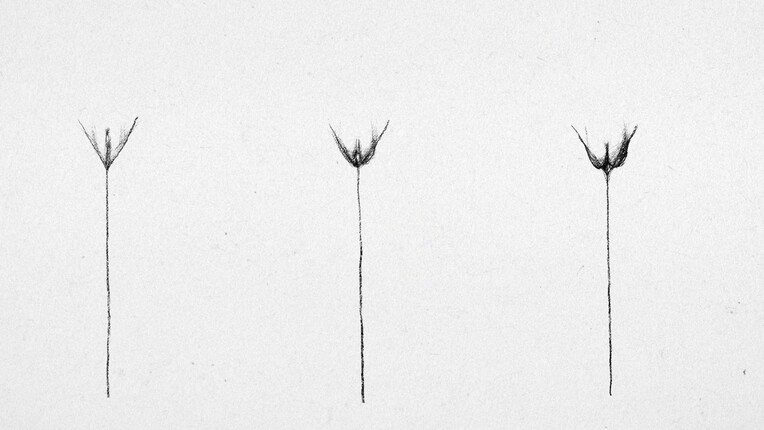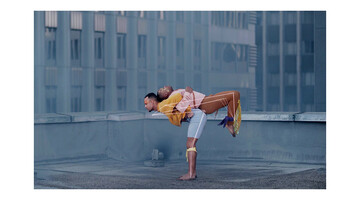
frei_raum Q21 exhibition space: "No Dancing Allowed"
Q21 Backstage: Curator Bogomir Doringer spoke with Elisabeth Hajek about the exhibition "No Dancing Allowed," which can be seen at MuseumsQuartier until November 20, 2022 with free admission.
For the first time in recent history, we were globally instructed not to move, not meet, and socialise. Not being allowed to move freely was equal to not being allowed to express freedom. While governments worldwide imposed strict bans and dance became viewed as dangerous, the collective need for dance resulted in various actions worldwide. From widespread dancing on Zoom and VR platforms to 'Unmute Us' protests in the Netherlands in support of club culture and against the closure of clubs and festivals, sports and other events were allowed. Dance has the power to unite and transform communities - posing a threat to governing bodies. ‘The exhibition No Dancing Allowed’ emphasises how restrictive laws can give rise to creative solutions as people find ways to move, no matter what, collectively or alone.
Interview with curator Bogomir Doringer about the exhibition "No Dancing Allowed"
The focus of your artistic research is on dance. What does dance mean to you?
I understand dance as freedom of expression and movement. All through history, certain dances have been promoted while others have been excluded. This results from culture and politics allowing certain movements but not others. We’re separating bodies based on social status, skin colour, gender, etc. For me, dance is a way of breaking out of those norms and has, throughout history, been a way of liberating certain groups and individuals. Dance is especially important to the LGBTQ+ community, women, and people of colour, and it is part of our cultural heritage. It has a very layered and complex function.
What can dance do in times of crisis, such as during a pandemic?
Dance aims to empower individuals and groups. In pandemic times, dance continues its existence through social media and as coping mechanism but also as a way of keeping people together in movement. I think that the pandemic made us all understand on a global level what not being allowed to move means. I hope that it made us understand some of the struggles of certain groups and gave rise to more empathy.
How does body perception change in a social context?
Watching people dance is extremely empowering and brave; it moves us. Dance, as a form of non-verbal communication, works through mirroring: we behave like others and imitate their movement. Movements spread and grow. Dance has socio-political power in times of crisis.
What does the exhibition space frei_raum mean to you?
Being able to show an exhibition in a space called frei_raum has always been very symbolic to me—especially in times of gentrification, right wing governments, expensive and unsuccessful architectural projects, and the whole trend toward making culture exclusive rather than open to everyone. Frei_raum is a free space that surprises people with topics that are socially and politicly relevant. So of course I have an emotional connection to it: it’s helped me to fully express myself and my work.
In your curatorial practice, what determines your selection of artistic stances?
When I curate, I’m not obsessed with satisfying the art market or national requirements. I curate because something matters to people globally. I’m interested in global social phenomena that manifest themselves through people and on people, in topics that are important for human and social political development. I’ll often form teams, combining activists, artists, and researchers, thus allowing artistic expression to become not only a tool of artists but also something via which other ideas can be communicated and reach new audiences.
Will dance be shifting more and more into the virtual space in the future?
Dance is movement—like liquid, fluid. It spreads and survives no matter what. Dance and the ritual of dancing will survive throughout all of our future history. During the pandemic, dance took a big step into the digital world; this is another space and time in which dance can exist, and that’s fascinating. Dance is also a form of fighting and doesn’t always occur out of joy, which I think is why it migrated so strongly into the virtual realm— and it can easily be manipulated for all kinds of agendas.
Performances as part of Vienna Art Week 2022
Venue: frei_raum Q21 exhibition space, MuseumsQuartier Wien
Admission free, the current access rules apply
Julius Pristauz: THE PENETRATION OF MULTIPLE SPACES
Sat 19.11., 18 – 18.30h
Julius Pristauz presents a performance developed especially for the exhibition "No Dancing Allowed": Under the title "The Penetration of Multiple Spaces" the two performers Julius Pristauz and Hannah Sussitz meet in the exhibition space and dance to music that remains inaudible to the audience. In reference to the piece "Untitled" (Go-Go Dancing Platform) by Felix Gonzalez-Torres (1991), the performance negotiates tensions between private and public spheres. Pristauz's interest is in the way we move through different spaces, how we perform versions of ourselves, and how different contexts and circumstances alter that performance.
Ania Nowak: To the Aching Parts! (Manifesto)
Sat 19.11., 18.45 – 19h
Former Q21 Artist-in-Residence Ania Nowak performs the public speech "To the Aching Parts! (Manifesto)" which dissects the language used by and against queer communities today. Devoid of grammar, the text is subjected to the order and pleasure of rhythm. Commissioned by HAU Hebbel am Ufer in the frame of “Manifestos for Queer Futures”, the performance relies on historic references to militancy by minorities to address the dangers of normativity and the need for embodied intersectionality when forming queer alliances today. By taking liberty to play around with the language of resentment and trauma as well as empathy and healing, it proposes to destabilise identities, practices and well known acronyms like LGB or FtM for the sake of a queer future we have yet to envisage.
